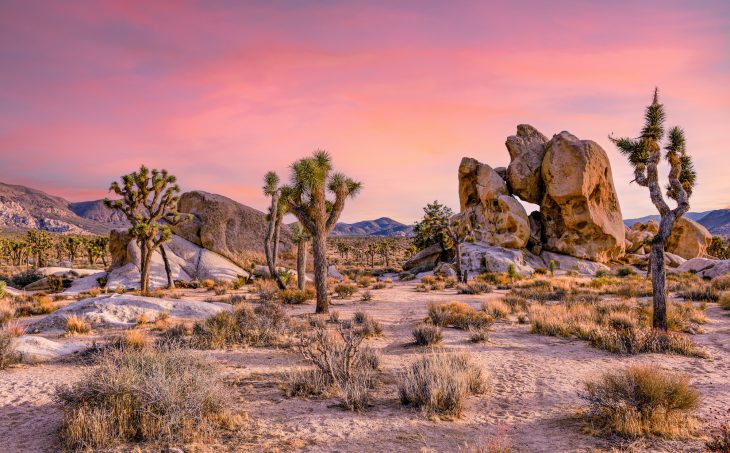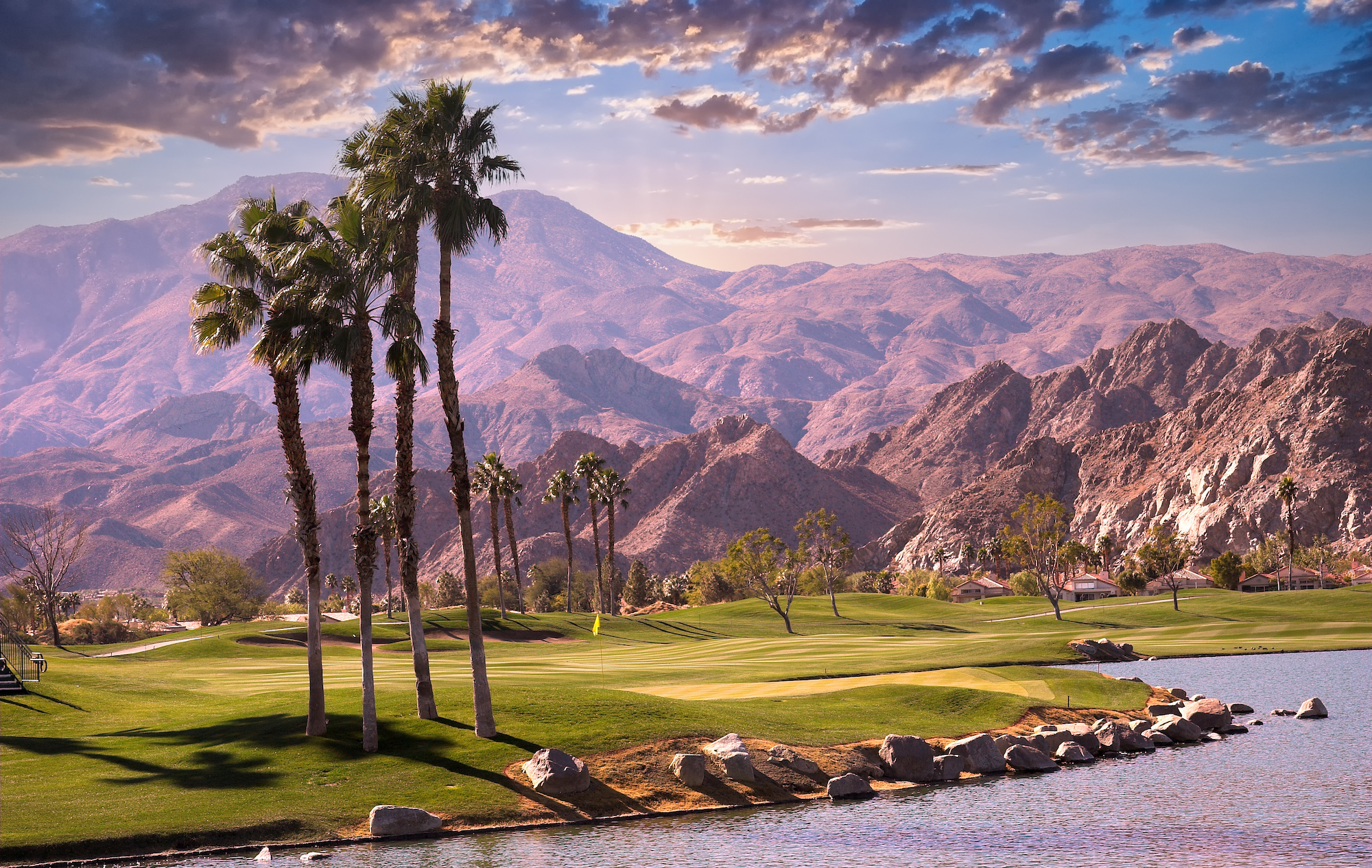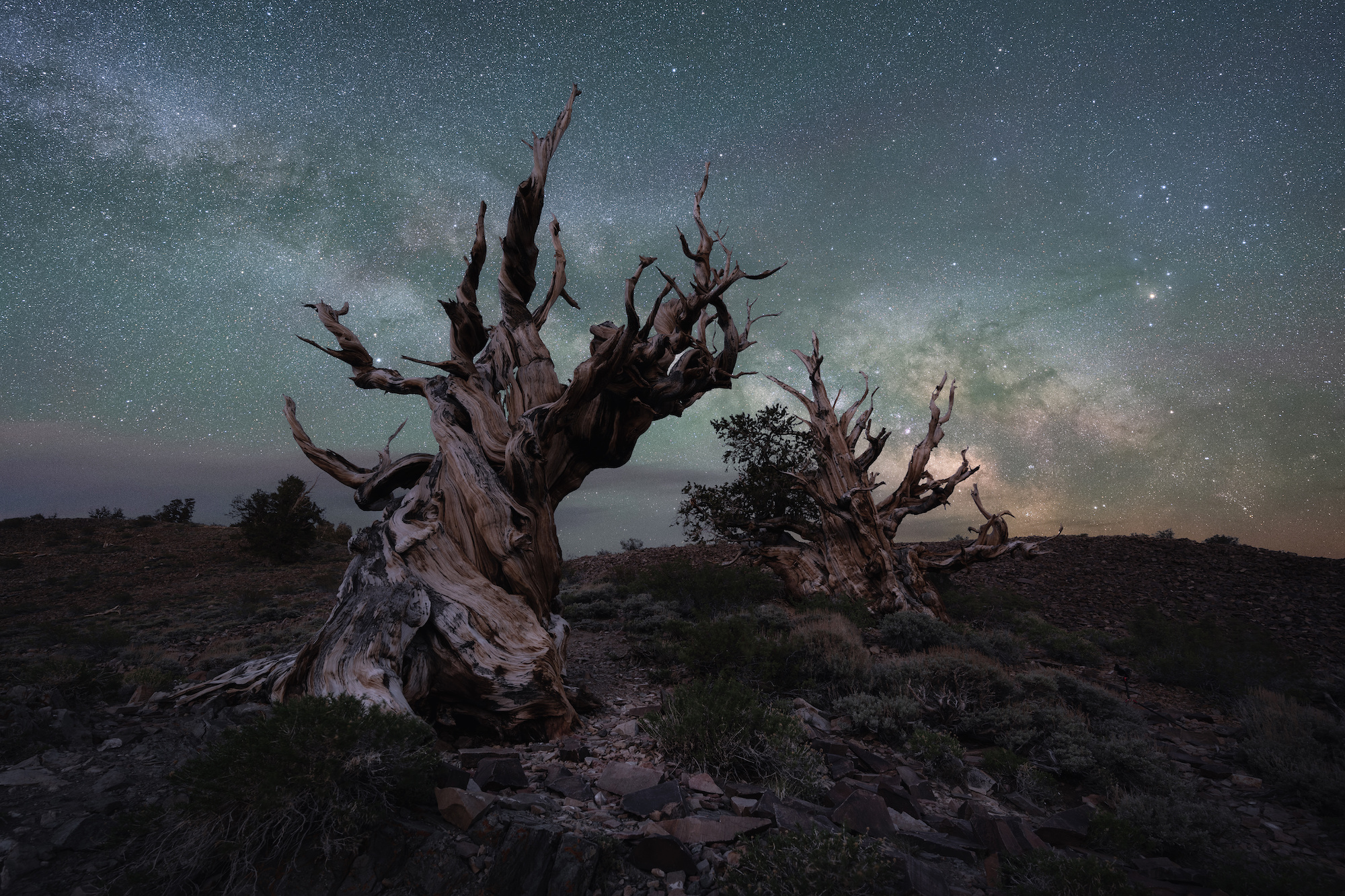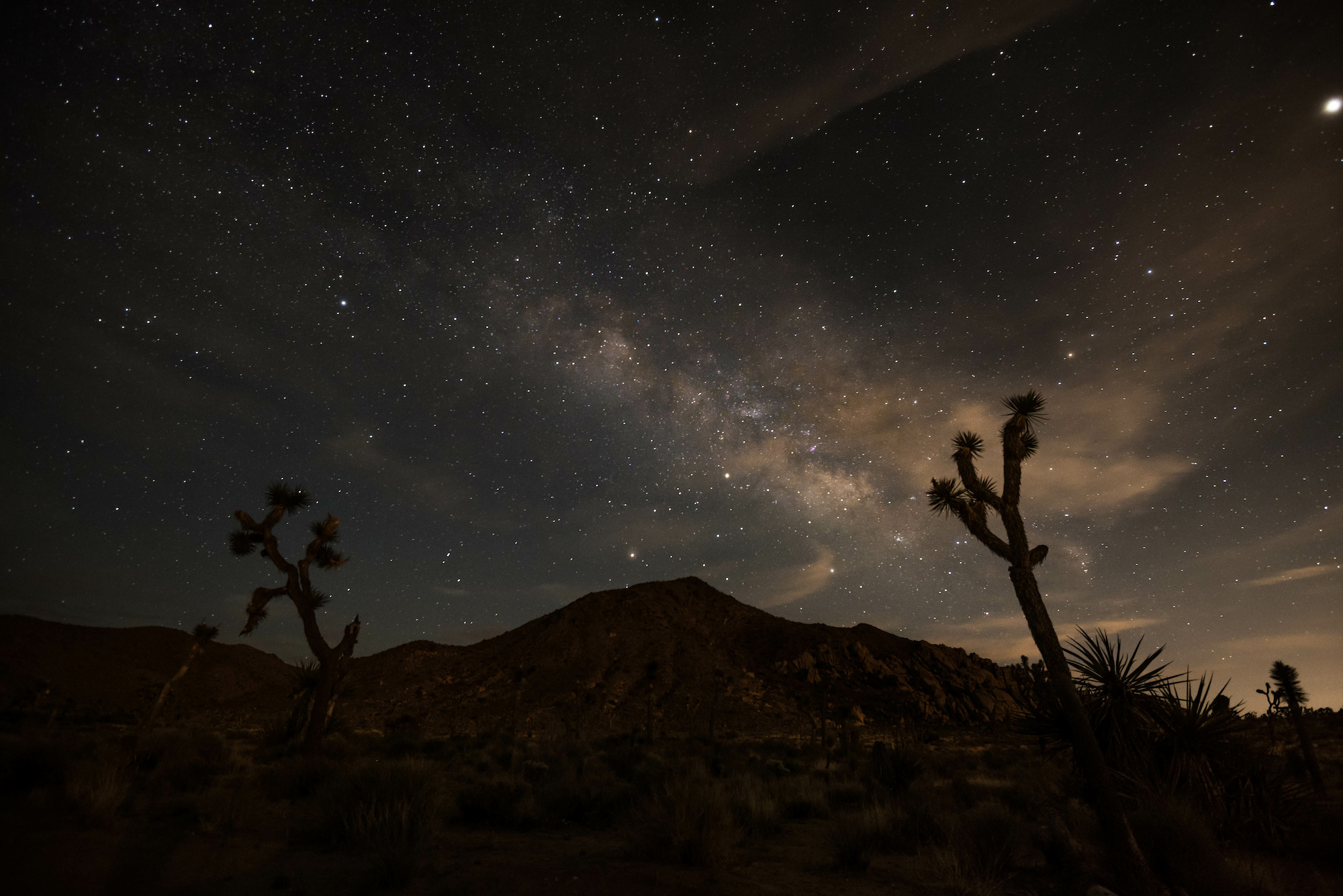
The California Desert Region is a captivating and awe-inspiring landscape that stretches across Southern California, boasting an array of natural wonders, unique wildlife, and a rich cultural tapestry. From the majestic Joshua Tree National Park to the ethereal beauty of the Mojave Desert, this arid expanse holds many hidden treasures. Let’s delve into 15 fascinating facts about this remarkable region that will ignite your sense of adventure.
The Majestic Joshua Tree: An Icon of the Desert
Standing tall and proud, the Joshua tree (Yucca brevifolia) is an iconic symbol of the California Desert Region. With its twisted branches and dagger-like leaves, this extraordinary tree adds an otherworldly charm to the landscape. Named by Mormon pioneers who believed the tree’s branches resembled the outstretched arms of Joshua leading them to the Promised Land, these unique trees are found abundantly throughout the Mojave Desert.
Death Valley: The Hottest Place on Earth
Nestled within the California Desert Region, Death Valley holds the record for the highest temperature ever recorded on Earth—reaching a scorching 134 degrees Fahrenheit (56.7 degrees Celsius) in 1913. Despite its ominous name, Death Valley’s stark beauty is home to diverse plant and animal life that have adapted to survive in this extreme environment.
Anza-Borrego Desert State Park: A Desert Wildflower Paradise
In the heart of the Colorado Desert lies the Anza-Borrego Desert State Park, a hidden gem bursting with vibrant wildflowers. Each spring, after a good winter rain, the desert floor transforms into a kaleidoscope of colors as countless wildflowers bloom, creating a breathtaking sight that attracts visitors from far and wide.
The Salton Sea: A Saline Oasis
Nestled in the southeastern corner of California’s Desert Region, the Salton Sea is a saline lake formed by accident in 1905. It is a haven for migratory birds, serving as a crucial resting and nesting spot along the Pacific Flyway. Despite facing environmental challenges, the Salton Sea remains an important ecological refuge.
Palm Springs: An Oasis of Luxury and Hollywood Glamour
Nestled against the backdrop of the San Jacinto Mountains, Palm Springs is an oasis of luxury, renowned for its hot springs, golf courses, and mid-century modern architecture. Once a favored retreat for Hollywood stars like Frank Sinatra and Elvis Presley, Palm Springs continues to exude an air of elegance and charm.

The Pioneertown: A Movie Set Turned Quirky Town
Venture into the heart of the High Desert, and you’ll discover Pioneertown—a unique community that started as a movie set in the 1940s. Designed to resemble an Old West town, Pioneertown was used as a backdrop for countless Western films. Today, it has evolved into a quirky town where visitors can experience a taste of the Old West with live performances and Old West-style shops.
The Coachella Valley: A Desert Playground of Music and Arts
The Coachella Valley, nestled in the Colorado Desert, is renowned for hosting one of the world’s most famous music festivals—Coachella. Every year, music lovers and artists from all walks of life gather in this vibrant desert oasis to celebrate music, art, and cultural diversity.
Mojave National Preserve: A Desert Wilderness
Encompassing over 1.6 million acres, the Mojave National Preserve is a desert wilderness that showcases the stark beauty of the California Desert Region. Here, you can explore vast Joshua tree forests, towering sand dunes, ancient lava flows, and breathtaking canyons. Be prepared to encounter a diverse array of wildlife, including bighorn sheep and desert tortoises.
The Living Desert Zoo and Gardens: A Conservation Oasis
Located in Palm Desert, the Living Desert Zoo and Gardens is a unique attraction dedicated to the preservation of desert ecosystems. This remarkable zoo showcases a variety of desert flora and fauna, providing visitors with an opportunity to learn about and appreciate the region’s delicate biodiversity.
The Cahuilla People: Ancient Inhabitants of the Desert
For thousands of years, the California Desert Region has been home to the indigenous Cahuilla people. These Native Americans thrived in the harsh desert environment, utilizing its resources for sustenance and crafting intricate baskets and pottery. Today, their rich cultural heritage can be explored through art, storytelling, and traditional ceremonies.
The Bristlecone Pine: Ancient Guardians of the Desert
Within the Inyo National Forest, you can find the ancient bristlecone pines, some of the oldest living trees on Earth. These remarkable trees have withstood the test of time, with some dating back over 4,000 years. Standing weathered and gnarled, they serve as silent witnesses to the ever-changing landscape of the California Desert Region.

The Salton Buttes: Volcanic Remnants of the Past
In the southeastern corner of the Salton Sea, the Salton Buttes rise dramatically from the desert floor. These volcanic remnants formed over 10,000 years ago during a series of volcanic eruptions. The striking buttes add a touch of rugged beauty to the otherwise serene desert landscape.
The Desert Tortoise: A Desert Icon
The desert tortoise (Gopherus agassizii) is a charismatic and protected species found in the California Desert Region. Known for their longevity and ability to survive in extreme conditions, these gentle creatures play a vital role in maintaining the delicate balance of the desert ecosystem.
Ancient Petroglyphs: Rock Art from the Past
Scattered throughout the California Desert Region, ancient petroglyphs offer a glimpse into the lives of the region’s early inhabitants. Carved into rocks by Native American tribes, these captivating symbols and images tell stories of their rich cultural history and spiritual beliefs.
Stargazing: A Celestial Spectacle
With its vast expanses and minimal light pollution, the California Desert Region offers unparalleled opportunities for stargazing. As night falls, the desert sky comes alive with a dazzling display of stars, offering a humbling and awe-inspiring experience that connects us to the vastness of the universe.

Conclusion
The California Desert Region is a captivating landscape that encompasses a rich tapestry of history, natural wonders, and diverse ecosystems. From the iconic Joshua trees to the mystical allure of Death Valley, this desert expanse beckons adventurers and nature enthusiasts alike. Whether you explore the arid landscapes, indulge in luxury in Palm Springs, or immerse yourself in the region’s cultural heritage, the California Desert Region is sure to leave an indelible mark on your soul.
Frequently Asked Questions (FAQs)
What is the best time to visit the California Desert Region?
The best time to visit the California Desert Region is during the cooler months of fall, winter, and early spring when temperatures are more moderate and wildflowers may be in bloom.
Are there any dangerous animals in the desert?
While the desert is home to various wildlife, encounters with dangerous animals are rare. However, it is always advisable to stay cautious and avoid disturbing or approaching any wild animals.
Can I camp in the desert?
Yes, camping is a popular activity in the California Desert Region. There are numerous campgrounds and designated areas where you can enjoy a unique outdoor experience under the desert sky.
Are there any hiking trails in the desert?
Yes, there are numerous hiking trails in the California Desert Region, ranging from easy nature walks to more challenging treks. Always ensure you are prepared with proper footwear, water, and sun protection.
What is the significance of the Joshua tree?
The Joshua tree holds cultural and ecological significance in the California Desert Region. It provides habitat and sustenance for various species and symbolizes the unique beauty and resilience of the desert landscape.
Was this page helpful?
Our commitment to delivering trustworthy and engaging content is at the heart of what we do. Each fact on our site is contributed by real users like you, bringing a wealth of diverse insights and information. To ensure the highest standards of accuracy and reliability, our dedicated editors meticulously review each submission. This process guarantees that the facts we share are not only fascinating but also credible. Trust in our commitment to quality and authenticity as you explore and learn with us.
